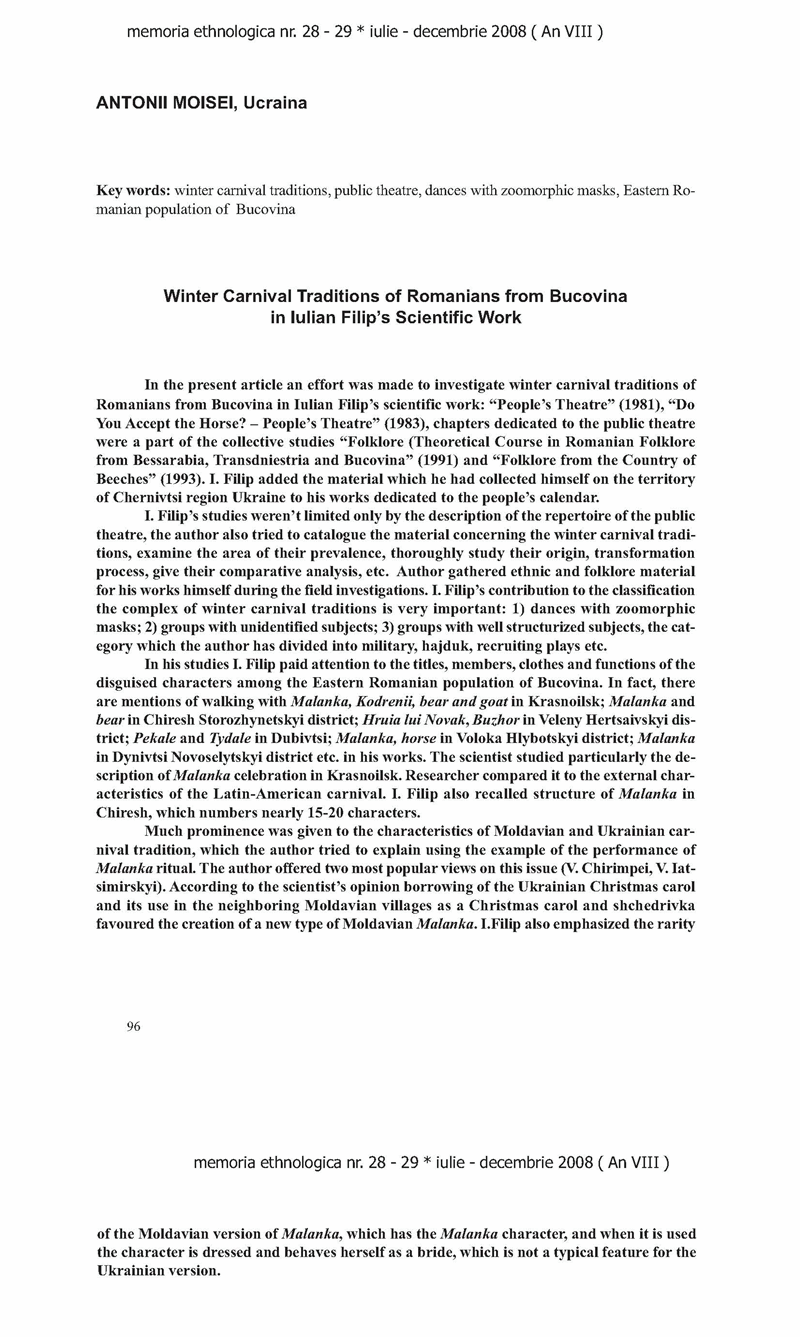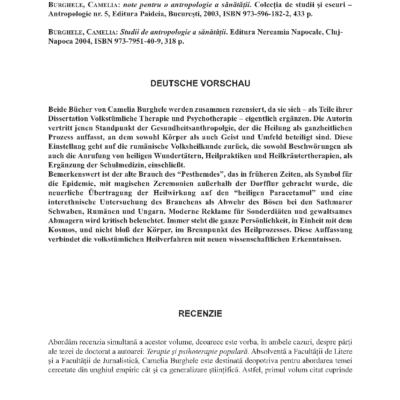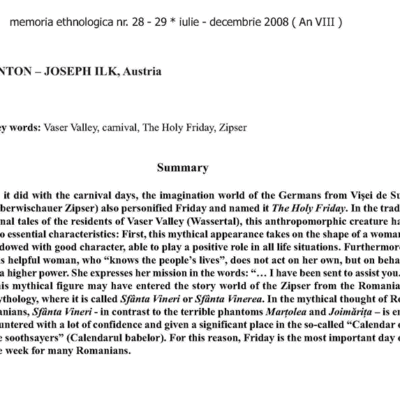Trebuie să fii autentificat pentru a publica o recenzie.
Winter Carnival Traditions of Romanians from Bucovina in Iulian Filip’s Scientific Work
Winter Carnival Traditions of Romanians from Bucovina
in Iulian Filip’s Scientific Work
In the present article an effort was made to investigate winter carnival traditions of
Romanians from Bucovina in Iulian Filip’s scientific work: “People’s Theatre” (1981), “Do
You Accept the Horse? – People’s Theatre” (1983), chapters dedicated to the public theatre
were a part of the collective studies “Folklore (Theoretical Course in Romanian Folklore
from Bessarabia, Transdniestria and Bucovina” (1991) and “Folklore from the Country of
Beeches” (1993). I. Filip added the material which he had collected himself on the territory
of Chernivtsi region Ukraine to his works dedicated to the people’s calendar.
I. Filip’s studies weren’t limited only by the description of the repertoire of the public
theatre, the author also tried to catalogue the material concerning the winter carnival traditions,
examine the area of their prevalence, thoroughly study their origin, transformation
process, give their comparative analysis, etc. Author gathered ethnic and folklore material
for his works himself during the field investigations. I. Filip’s contribution to the classification
the complex of winter carnival traditions is very important: 1) dances with zoomorphic
masks; 2) groups with unidentified subjects; 3) groups with well structurized subjects, the category
which the author has divided into military, hajduk, recruiting plays etc.
In his studies I. Filip paid attention to the titles,members, clothes and functions of the
disguised characters among the Eastern Romanian population of Bucovina. In fact, there
are mentions of walking with Malanka, Kodrenii, bear and goat in Krasnoilsk; Malanka and
bear in Chiresh Storozhynetskyi district; Hruia lui Novak, Buzhor in Veleny Hertsaivskyi district;
Pekale and Tydale in Dubivtsi; Malanka, horse in Voloka Hlybotskyi district; Malanka
in Dynivtsi Novoselytskyi district etc. in his works. The scientist studied particularly the description
ofMalanka celebration in Krasnoilsk. Researcher compared it to the external characteristics
of the Latin-American carnival. I. Filip also recalled structure of Malanka in
Chiresh, which numbers nearly 15-20 characters.
Much prominence was given to the characteristics of Moldavian and Ukrainian carnival
tradition, which the author tried to explain using the example of the performance of
Malanka ritual. The author offered twomost popular views on this issue (V. Chirimpei, V. Iatsimirskyi).
According to the scientist’s opinion borrowing of the Ukrainian Christmas carol
and its use in the neighboring Moldavian villages as a Christmas carol and shchedrivka
favoured the creation of a new type ofMoldavianMalanka. I.Filip also emphasized the rarity
of the Moldavian version of Malanka, which has the Malanka character, and when it is used
the character is dressed and behaves herself as a bride, which is not a typical feature for the
Ukrainian version.





Recenzii
Nu există recenzii până acum.